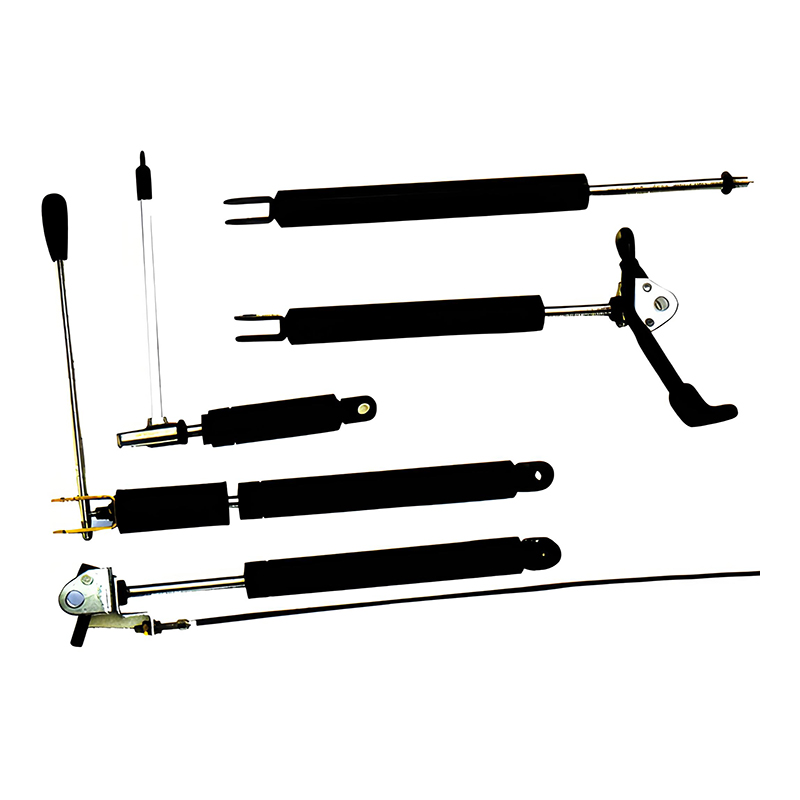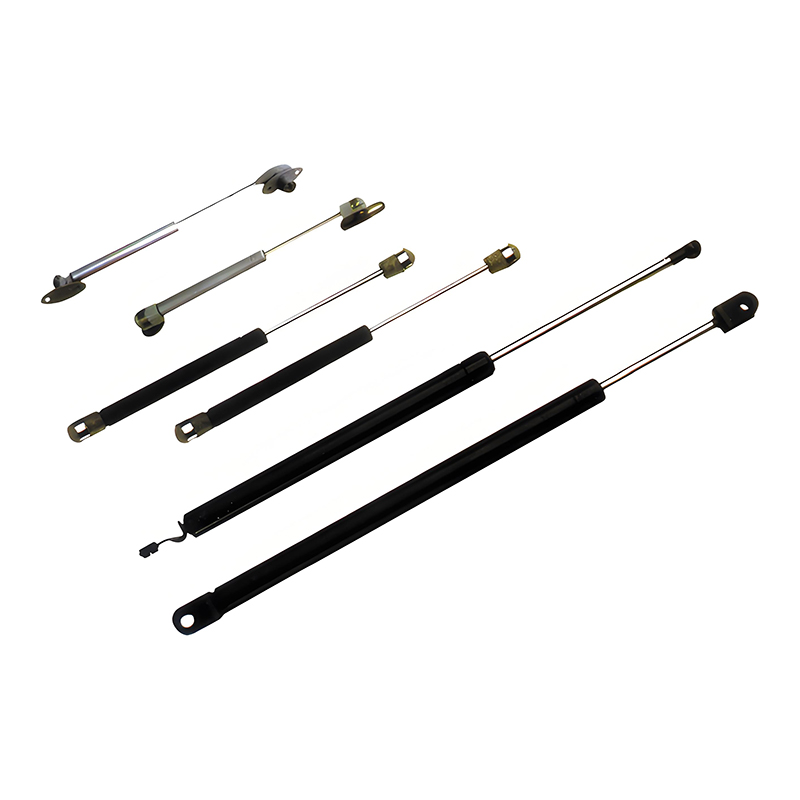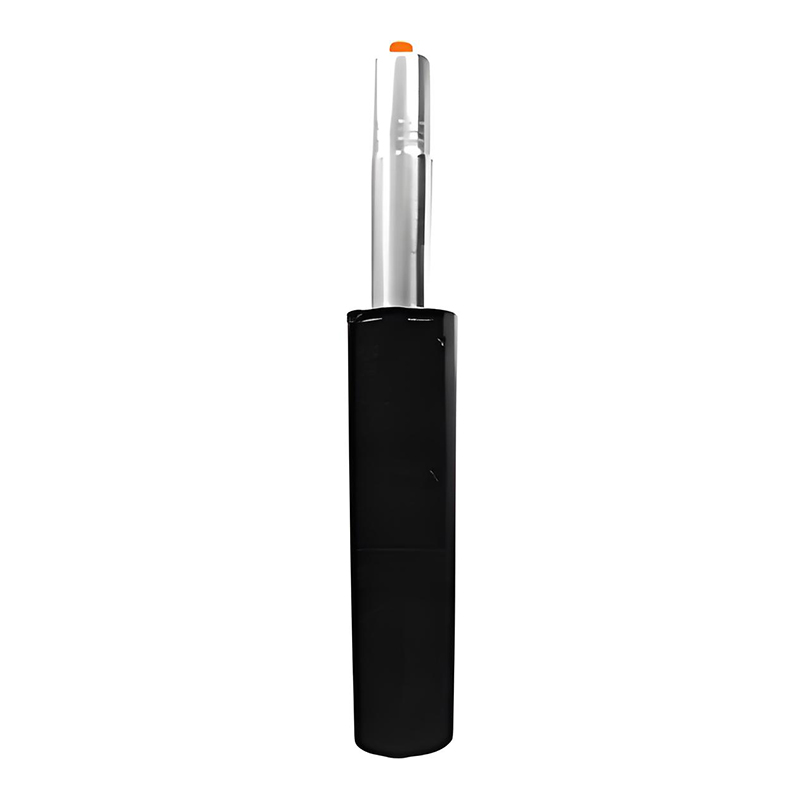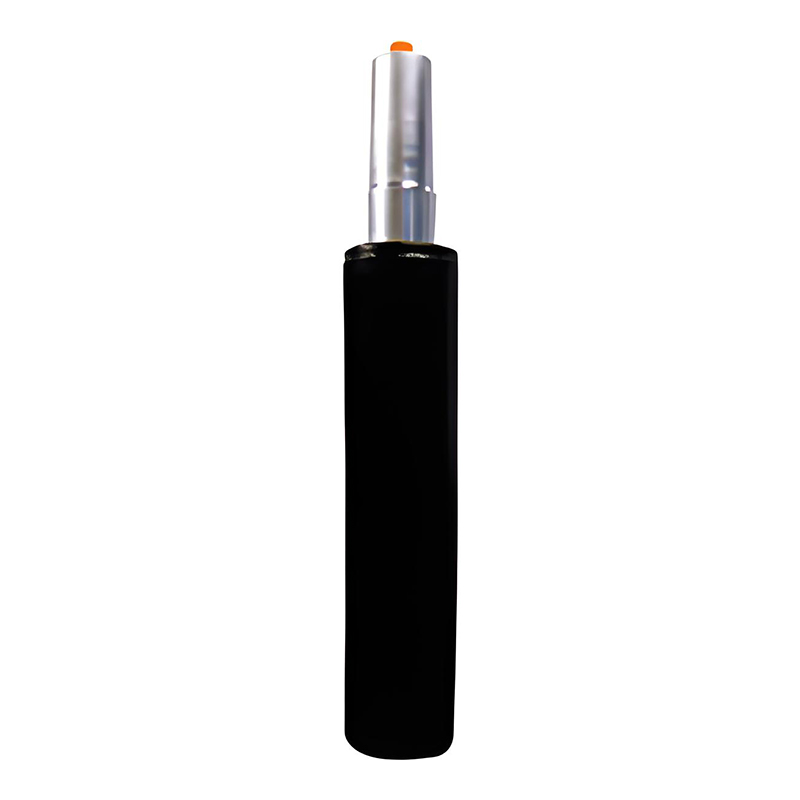Content
One: Introduction to Lockable Gas Spring
-
Definition and Overview
- A lockable gas spring is a specialized mechanical device that combines the basic functions of a traditional gas spring with the added ability to lock securely at any desired position.
- While a standard gas spring only provides smooth motion and force support, the lockable version introduces an integrated locking system that allows users to stop the piston rod and hold it firmly in place.
- This unique characteristic makes lockable gas springs highly versatile in industries where adjustable positioning and reliable support are critical.
-
Comparison with Standard Gas Springs
- Standard Gas Springs: Provide controlled lifting, lowering, or counterbalancing of weights, but cannot stop mid-way or resist additional loads without external support.
- Lockable Gas Springs: Offer the same lifting and damping features but also integrate a mechanical or hydraulic lock. This means users can freeze the position at any stroke length, preventing unwanted movement.
- Key Difference: The locking mechanism turns a passive support element into an active positioning tool.
-
Why Lockable Gas Springs Are Important
- Safety: Prevents sudden drops of medical beds, machinery lids, or chairs.
- Convenience: Enables infinite position adjustments with minimal effort.
- Ergonomics: Provides comfort in applications like chairs and recliners by allowing users to fine-tune posture.
- Precision: Essential in industrial settings where equipment needs exact positioning.
-
Advantages Over Alternatives
- Compared with purely mechanical hinges or screw jacks, lockable gas springs are lighter, easier to operate, and faster to adjust.
- Compared with electric actuators, they are cost-effective, maintenance-friendly, and do not require a power supply.
- Their hybrid nature bridges the gap between mechanical simplicity and adjustable functionality.
-
Historical Development
- Gas springs were first developed in the 20th century for automotive applications such as trunk lids and hoods.
- Lockable variants emerged later, as industries demanded adjustable positioning solutions, especially in medical and ergonomic fields.
- Today, advancements in sealing technology, material strength, and precision machining allow lockable gas springs to perform reliably for years under heavy usage.
-
Typical User Needs
- Homeowners: Adjustable beds, chairs, and cabinets.
- Healthcare providers: Hospital beds, therapy chairs, and operating tables.
- Engineers: Adjustable panels, machine covers, and safety hoods.
- Automotive manufacturers: Seats, hatchbacks, and vehicle storage solutions.
-
Summary of Introduction
- Lockable gas springs are not just supportive components but multifunctional devices.
- They stand out because of their ability to provide both dynamic movement and static locking, bridging the gap between flexibility and stability.
- Understanding their structure and principles sets the stage for exploring deeper technical details and applications.
Two: Structure and Working Principle
-
Core Components of a Lockable Gas Spring
- Cylinder: Houses compressed gas (usually nitrogen) and provides the pressure medium.
- Piston and Rod: Move inside the cylinder to transmit force and motion.
- Seals and Guides: Ensure smooth movement and prevent gas leakage.
- Locking Mechanism: The critical addition that allows controlled locking.
- Release Valve or Actuator: Engaged by buttons, levers, or cables to unlock the spring and permit movement.
-
Working Principle of a Standard Gas Spring
- Based on Boyle’s law: compressed nitrogen provides constant pressure.
- As the rod is pressed into the cylinder, internal pressure increases slightly due to volume reduction.
- This pressure exerts force outward, assisting lifting or holding tasks.
-
How the Locking System Works
-
In lockable gas springs, a release valve is added between the piston rod and pressure chamber.
-
When the valve is closed:
- The piston rod is hydraulically locked at its current position.
- External loads cannot push or pull the rod further.
-
When the valve is opened:
- The rod moves freely again under the force of compressed gas.
- Users can reposition and then relock at the desired stroke.
-
-
Types of Locking Mechanisms
-
Rigid Locking:
- Holds the rod in place without allowing elastic movement.
- Suitable for applications requiring firm support (e.g., hospital beds).
-
Elastic Locking:
- Allows slight cushioning effect, offering comfort (e.g., office chairs).
-
Adjustable Locking:
- Combination design where stiffness and elasticity can be tuned.
-
-
Operational Modes
- Push-Open Mode: Spring assists in extending when unlocked.
- Pull-Open Mode: Spring resists extension and pulls inward.
- Combination Mode: Offers both extension and compression control.
-
Hydraulic vs. Mechanical Locking
- Hydraulic: Uses oil or fluid to hold position, excellent for smooth control.
- Mechanical: Uses internal mechanical catch systems, simpler but less flexible.
- Hybrid: Some advanced models combine both methods.
-
Control Methods
- Manual Release: Push button or lever near the spring itself.
- Remote Release: Cable-controlled, often used in chairs or hospital beds.
- Electronic Release: Integrated into smart systems, triggered by a button or remote.
-
Key Technical Parameters
- Stroke length (distance the rod can travel).
- Force rating (measured in Newtons, determines lifting capacity).
- Damping characteristics (speed control during movement).
- Locking pressure (how firmly the spring holds in position).
-
Summary of Structure and Principle
- A lockable gas spring combines traditional spring pressure with intelligent locking mechanisms.
- The design ensures smooth, controlled, and safe adjustments across a wide range of industrial and consumer applications.
Three: Key Features and Performance Characteristics
-
Force Adjustment and Control
- Gas pressure defines the output force.
- Manufacturers often offer customization of force values to suit specific load requirements.
- Some models allow fine-tuning of internal gas charge for precision applications.
-
Locking in Any Position
- Unlike traditional springs, lockable variants allow infinite positioning.
- This feature makes them suitable for adjustable furniture, where exact angles matter.
- Prevents accidental movement in sensitive environments like hospitals.
-
Safety and Reliability
- Equipped with high-quality seals and robust locking systems.
- Resistant to sudden pressure drops, ensuring long-term reliability.
- Safety release mechanisms prevent unintentional unlocking.
-
Durability and Longevity
- Designed to perform tens of thousands of locking cycles.
- Corrosion-resistant coatings for harsh environments.
- Self-lubricating seals reduce maintenance needs.
-
Comfort and Ergonomics
- Smooth motion and elastic locking improve user comfort.
- Ideal for recliners, ergonomic chairs, and patient positioning systems.
- Reduces operator fatigue in industrial equipment.
-
Silent Operation
- Modern lockable gas springs are engineered for noise-free functioning.
- Important for hospital and office settings where silence is valued.
-
Customization Options
- Force range (from light loads like laptop stands to heavy loads like hospital tables).
- Stroke length and diameter based on space constraints.
- Locking mode (rigid vs elastic) depending on application.
- End fittings (ball joints, brackets, or custom mounts).
-
Performance Under Different Conditions
- Temperature resistance: Designed to function from –30°C to +80°C.
- Load adaptability: Can support static and dynamic loads.
- Environmental resilience: Resistant to dust, humidity, and chemicals.
-
Summary of Features
- The lockable gas spring is a multifunctional component that excels in precision, comfort, and safety.
- Its adaptability makes it the go-to choice for industries demanding both strength and flexibility.
Four: Applications of Lockable Gas Spring
-
Medical Equipment
- Hospital beds with adjustable head and foot s.
- Wheelchairs with reclining backrests.
- Operating tables requiring precise height control.
- Rehabilitation chairs for patient comfort and safety.
-
Furniture
- Ergonomic office chairs with adjustable tilt.
- Recliners and beds with customizable positions.
- Height-adjustable desks for better posture.
-
Automotive Industry
- Car seats with adjustable backrests.
- Trunk lids and tailgates requiring controlled movement.
- Specialty vehicles with foldable seating arrangements.
-
Industrial and Engineering
- Machine covers that need secure yet adjustable support.
- Control panels requiring multi-angle positioning.
- Adjustable arms for monitors and industrial tools.
-
Rehabilitation and Fitness Equipment
- Gym benches with adjustable incline.
- Therapy chairs supporting different positions.
- Patient transfer systems that demand smooth, lockable adjustments.
-
Other Emerging Applications
- Aircraft seating for luxury cabins.
- Marine equipment where space-saving and adjustability are essential.
- Home appliances such as adjustable ironing boards.
-
Summary of Applications
- The lockable gas spring proves useful in everyday life, healthcare, automotive, and heavy industry.
- Its wide adaptability highlights its role as a versatile engineering solution.
Five: Selection and Installation Guidelines
-
Factors to Consider When Choosing a Lockable Gas Spring
- Load Capacity: Match spring force to the weight of the application.
- Stroke Length: Choose based on required adjustment range.
- Type of Locking: Rigid for medical/industrial, elastic for comfort products.
- Mounting Orientation: Vertical vs horizontal affects performance.
- Environmental Conditions: Corrosion-resistant versions for outdoor use.
-
Installation Guidelines
- Ensure proper alignment of piston and rod during mounting.
- Avoid side loads that could damage seals.
- Always install with the piston rod pointing downwards to ensure lubrication.
- Use correct end fittings for stability.
-
Maintenance Practices
- Regular inspection for leakage or wear.
- Clean external surfaces to prevent dust accumulation.
- Avoid disassembling gas springs (sealed units).
- Replace after exceeding recommended cycles.
-
Troubleshooting Common Issues
- Loss of Pressure: Replace spring if force decreases significantly.
- Lock Failure: Check actuator or cable connections.
- Noisy Operation: Lubricate or inspect for wear.
-
Summary of Selection and Installation
- Proper sizing, installation, and maintenance ensure the maximum efficiency and lifespan of lockable gas springs.
Six: Future Development Trends
-
Smart Integration
- Incorporation with electronic sensors for automatic positioning.
- Integration with IoT for real-time monitoring.
- Remote control and app-based adjustments.
-
Material Innovations
- Lightweight alloys to reduce overall weight.
- High-strength composites for extreme loads.
- Advanced sealing materials for better durability.
-
Sustainability
- Use of recyclable materials in construction.
- Development of environmentally friendly gases.
- Longer life cycles to reduce waste.
-
Customization Expansion
- Tailor-made solutions for niche industries like aerospace and robotics.
- Modular systems for easy replacement and upgrades.
-
Global Market Growth
- Increasing demand in healthcare due to aging populations.
- Expansion in automotive for comfort and safety features.
- Growing adoption in smart homes and ergonomic furniture.
-
Summary of Trends
- The future points towards smarter, lighter, and greener lockable gas springs.
- They will evolve from mechanical aids to intelligent components integrated into connected systems.
Seven: Conclusion
-
Key Takeaways
- Lockable gas springs combine motion control and secure locking.
- They are vital in ensuring safety, comfort, and flexibility across multiple industries.
-
Broader Importance
- In healthcare, they enhance patient care.
- In automotive, they improve comfort and safety.
- In industry, they increase efficiency and ergonomics.
-
Future Outlook
- With technological advancements, lockable gas springs will become smarter, lighter, and more sustainable.
- They are set to remain critical components in both traditional and emerging applications.
-
Final Thought
- Lockable gas springs are not just engineering devices—they are enablers of comfort, precision, and safety in modern life.




